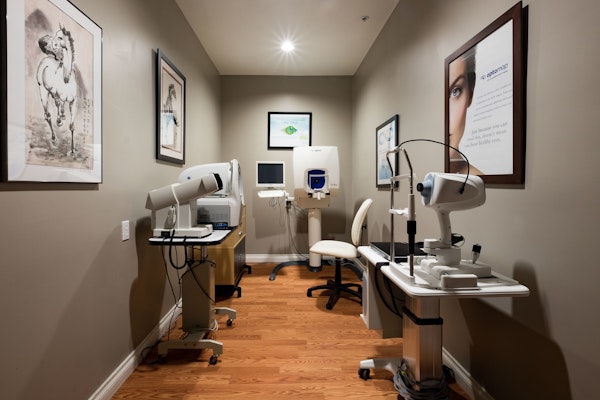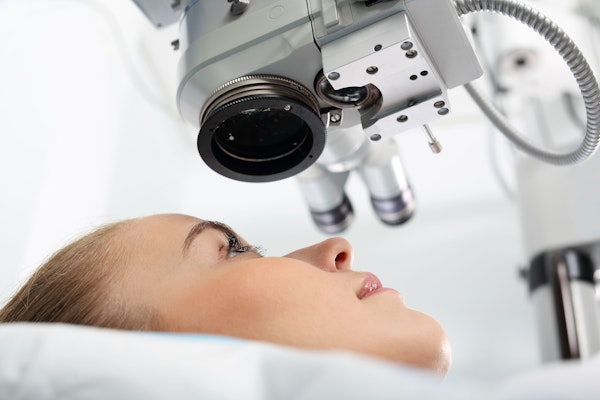
Stye
When a stye forms on your eyelid, it can cause pain, swelling, and other uncomfortable symptoms.
While styes are annoying, they are harmless and typically clear up on their own within a few days.
How do I know if I have a stye?

Styes are Typically Accompanied by Swelling and Discomfort
A Lump on the Eyelid
Typically, a stye appears as a lump on the top or bottom eyelid near the lashes. Similar in shape to a pimple, they can be red, white, or yellowish.
Swelling
Localized swelling on the eyelid is a common symptom of a stye. The swollen lid may be tender or interfere with vision.
Pain and Redness
A stye may make your eye red and uncomfortable. Pain, burning, or a scratchy sensation on the eyeball are all typical. Often, patients feel as if they have something stuck in their eye.
Stress, Medical Issues, and Other Factors Can Raise Your Risk for Styes
A range of factors can increase the risk of a stye forming, including:
- Poor eyelid hygiene
- Improper removal of eye makeup
- Rosacea
- Contaminated or old cosmetics
- Inserting contact lenses with dirty hands
- Inflammatory disease, such as blepharitis
- Eczema
Hormonal changes can also raise the risk of developing a stye.
So what actually causes the stye?
Blocked and Infected Glands
Bacteria
When bacteria from your skin is transferred into the glands on your eyelids, it can cause an infection resulting in a stye.
Blockages
In some cases, the glands in or on the eyelids become plugged. Any foreign substance, such as scar tissue, makeup, or dust, can block the glands and cause a stye to form.

Most styes are the result of a staph infection. These infections are caused by bacteria often found in the nose, respiratory tract, or on the skin.
Taking Care of Your Eyes Can Minimize Your Risk for Styes
Avoid Touching Your Eyes
Keeping your hands away from your eyes can go a long way towards preventing styes. If you do have to touch your eye, make sure to wash your hands first with soap and warm water.
Be Careful with Cosmetics
Throwing away old cosmetics and taking your makeup off before bed are two good methods of maintaining the health of your eyelids. You should also avoid sharing cosmetics with others.
Keep Your Lenses Clean
If you wear contact lenses, wash your hands thoroughly before inserting them and follow disinfection instructions carefully.
Styes Are Easy to Identify
Usually, a doctor can diagnose a stye simply by looking at your eyelid. They may use a slit lamp to examine your eye as well.
/https://d3b3by4navws1f.cloudfront.net/iStock-508192454.jpg)
Typically, doctors also ask about injuries and previous eye issues or surgeries to get a sense of your medical history. Explaining your eyelid and facial hygiene habits can also help with diagnosis.
Most Styes Go Away on Their Own after a Few Days
Self-Care
In many cases, leaving the stye alone for several days is all the treatment required. Your doctor may advise you to clean your eyelid or stop wearing contact lenses during this time to help it heal.
Warm Compresses
Placing a warm washcloth over the affected eye can help relieve inflammation so your stye heals more quickly. You can apply the compress for about five to 10 minutes two to three times a day.
Antibiotics
If your stye does not heal on its own, your doctor may prescribe an antibiotic eye drop, cream, or tablet to clear the infection.
Surgery
For persistent styes, your doctor may make a small incision to drain the pus. This minor procedure can expedite healing and relieve pain and swelling.
Most Styes Are Harmless, But Have Persistent Styes Checked Out
In general, styes are not serious and will clear up within a few days. If your stye does not start to improve after 48 hours, contact a doctor. You should also visit an ophthalmologist if redness and swelling begin to spread beyond your eyelid.

/https://d3b3by4navws1f.cloudfront.net/iStock_41603502_LARGE.jpg)






